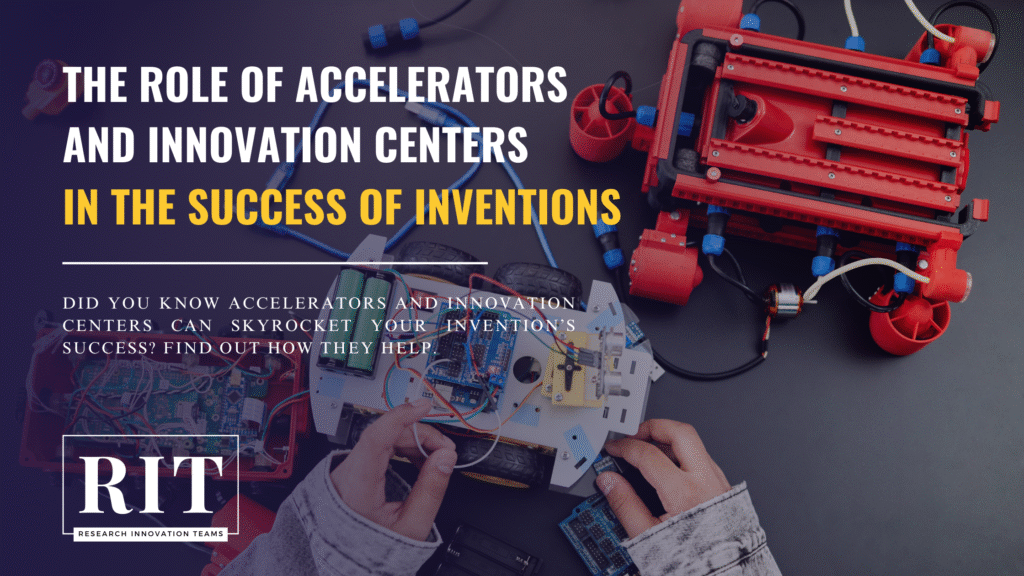In today’s world, innovation is considered one of the most important factors for economic growth, increasing competitiveness, and creating value across various industries. Companies and governments worldwide make substantial investments in research and development (R&D) to develop cutting-edge technologies and introduce new products and services to the market. These investments have not only driven advancements in fields such as artificial intelligence, biotechnology, renewable energy, and communication technologies but have also brought about major transformations in the global economy.
According to the latest global reports, R&D expenditures worldwide reached over $2.4 trillion in 2023, indicating continuous growth in this sector. The United States and China remain the largest investors in this field. For instance, China spent more than 3.3 trillion yuan (approximately $458.5 billion) on R&D in 2023, marking an 8.1% increase compared to the previous year. It is projected that these investments will exceed 3.6 trillion yuan in 2024. This trend demonstrates that countries and major corporations rely on innovation and technological advancement more than ever before.
Leading technology companies such as Amazon, Microsoft, Samsung, and Google are among the key players in R&D. For example, Amazon invested over $73.2 billion in R&D in 2023, making it one of the most pioneering companies in innovation. Microsoft also allocated $26 billion in the same year to advance cutting-edge technologies such as artificial intelligence and cloud computing. Companies that invest in these areas not only achieve technological breakthroughs, but also significantly increase their market value.
However, innovation is not solely about creating new technologies; the real challenge lies in successfully commercializing these innovations and turning them into products and services that can thrive in global markets. Many startups and large corporations, despite having innovative ideas, fail due to their inability to commercialize them effectively. This article will examine the success stories of major companies in innovation commercialization and analyze the key factors contributing to their achievements.
5 Success Stories in Innovation Commercialization
Major technology and manufacturing companies must not only introduce innovative products to succeed in competitive markets but also effectively present these innovations to customers and encourage them to make purchases. In this section, we will explore the success stories of Apple, LEGO, Samsung, Warby Parker, and Microsoft to see how these brands managed to commercialize their innovations and become industry leaders.
- Apple: Innovation in Design and User Experience
Apple revolutionized the smartphone industry with the launch of the iPhone in 2007. Before its release, the mobile phone market was dominated by brands like Nokia and BlackBerry, which primarily offered devices with physical keyboards and small screens. However, Steve Jobs and the Apple team introduced the first iPhone, featuring a touchscreen display and the iOS operating system, providing a completely new mobile experience. Unlike its competitors, the iPhone had no physical keyboard and was entirely touch-based. This innovation quickly made the iPhone the preferred choice for many users worldwide. Additionally, Apple launched the App Store, enabling developers to create apps for the device, which led to the development of a new ecosystem. As a result, the iPhone rapidly became a best-selling product and now accounts for more than 50% of Apple’s revenue.
- LEGO: Revitalizing the Brand through Product and Customer Experience Innovation
In the 1990s, LEGO faced significant challenges, including declining sales, increased competition, and difficulty attracting new customers. To overcome this crisis, the company decided to change its strategies and introduce new innovations. One key decision was entering the franchise world. By partnering with popular brands like Star Wars, Harry Potter, and Marvel, LEGO created themed sets that resonated with fans of these franchises. This move significantly increased the appeal of LEGO products among both children and adults. Additionally, LEGO expanded into the digital world by launching video games and animated movies, further strengthening its brand. The company also introduced the LEGO Ideas platform, allowing fans to submit their own ideas for new sets, which could be turned into real products if approved. These initiatives not only helped LEGO recover from its financial crisis but also transformed it into one of the most valuable brands in the toy industry.
- Samsung: Continuous Innovation in the Smartphone Market
Samsung has consistently influenced the smartphone industry through continuous innovation. Initially known for manufacturing televisions and home appliances, Samsung decided to enter the mobile phone market in the early 2000s. Leveraging research and development, the company introduced its first smartphone, the Galaxy, in 2010, running on the Android operating system. This device became a strong competitor to the iPhone. Samsung further strengthened its position by pioneering display technologies, such as Super AMOLED screens, and high-quality cameras. The company also introduced innovative features like fast-charging batteries and water-resistant designs, allowing it to remain competitive in the global market. Today, Samsung continues to lead mobile innovation with its Galaxy series, including models like the Galaxy Note and Galaxy Z Fold.
- Warby Parker: Transforming Eyewear Shopping and Creating a New Business Model
Warby Parker is a successful startup that revolutionized the eyewear industry, particularly in retail. Founded in 2010, the company aimed to change the way people buy glasses while making them more affordable. By introducing a direct-to-consumer (D2C) model through its website, Warby Parker significantly reduced costs and offered high-quality glasses at competitive prices. Additionally, the company utilized augmented reality (AR) technology, allowing customers to try on glasses virtually without visiting a physical store. These innovations, combined with effective marketing strategies and the expansion of physical stores, helped Warby Parker rapidly grow from a small startup into a global brand. Today, Warby Parker is recognized as a leading example of e-commerce innovation in the retail industry.
- Microsoft: Strategic Shift and Focus on Cloud Services
Once primarily known for its Windows operating system and Office software, Microsoft underwent a major transformation in the early 2010s to become one of the world’s largest cloud service providers. This strategic shift was led by CEO Satya Nadella, who focused on developing the Azure platform, which became a key competitor to Amazon Web Services (AWS) in the cloud computing market. This change in strategy positioned Microsoft as a dominant player in cloud services, shifting its revenue focus from software sales to cloud computing. By 2023, Azure held over 30% of the global cloud services market, driving significant growth for the company. This transformation not only helped Microsoft maintain its relevance in global markets but also established it as a leading innovator in the cloud computing industry.
Key Factors in Successful Innovation Commercialization
Successfully commercializing an innovation is a complex process that requires a precise strategy, resource management, and a deep understanding of the market. Many companies and startups, despite developing new technologies, fail to bring them to market and attract customers. This section explores the key factors that contribute to the successful commercialization of innovations.
- Market Research and Understanding Customer Needs
One of the most critical factors for success in innovation commercialization is a thorough understanding of the market and customer needs. Many companies launch products without sufficient research, leading to a lack of demand or failure to meet real customer needs. Market research involves analyzing economic trends, studying competitors, and gathering feedback from target customers.
- Developing Prototypes and Continuous Testing
Before entering the market, an innovative product or service should be developed in the form of prototypes and continuously improved through multiple testing phases. Frequent testing helps identify and fix technical issues, ensuring that the final product performs optimally.
- A Sustainable Business Model and Pricing Strategy
Even the best innovations cannot survive in the market without a sustainable business model. Successful companies design business models that effectively reflect the product’s value proposition. Additionally, pricing strategies should attract customers while covering research and development costs.
- Investment in Marketing and Branding
Even the most innovative products cannot succeed in the market without proper marketing. Effective advertising strategies, accurate product positioning, and strong branding play a crucial role in the successful commercialization of innovations.
- Establishing Distribution Networks and Effective Sales Channels
Having a great technology is not enough, the product must be easily accessible to customers. To achieve this, companies need to establish efficient sales channels, collaborate with retailers, and expand online sales strategies.
- Strategic Partnerships and Business Collaborations
Collaborating with other companies can streamline the commercialization process. Many successful innovations have been brought to market through business partnerships, allowing companies to leverage each other’s strengths.
- Flexibility and Adaptability to Market Changes
Global markets are constantly evolving, and companies that can quickly adapt to these changes have a higher chance of success. The ability to respond to new customer needs, economic shifts, and emerging technologies is a key factor in the successful commercialization of innovations.
Challenges and Risks in Innovation Commercialization
While innovation commercialization has the potential to create significant value and profit, it comes with numerous challenges and risks that can complicate the path to success. Although new innovations can open up fresh market opportunities, launching them in the real world, where competition is fierce and economic and social conditions are constantly changing, is difficult and full of uncertainties. This section examines the key challenges and risks in innovation commercialization, using real-world examples to provide a clearer understanding of these issues.
- Misalignment with Market Needs
One of the biggest risks companies face when commercializing an innovation is the potential mismatch between the product and actual market needs. Even with cutting-edge technology, a new product may fail to address consumer problems or desires effectively. Many innovations, despite being technologically advanced, may not be attractive or practical for the target audience.
For instance, wearable health and fitness gadgets initially struggled to gain traction in the market. Despite their innovative features, many of these products failed commercially due to a lack of consumer interest and engagement.
- High Research and Development (R&D) Costs
Major innovations often require substantial investment in research and development. While successful innovations can generate high returns, unsuccessful projects can impose a significant financial burden on companies. For startups and small businesses, initial R&D costs can exceed their financial capacity, potentially leading to bankruptcy.
A notable example is Theranos, a company that claimed to have developed a revolutionary blood-testing device. Due to high research costs and overpromising without scientific validation, it ultimately became one of the biggest failures in the health-tech industry. This case highlights how, even with good intentions and financial backing, mismanaged R&D can turn an innovation into a crisis.
- Financial Risks and Insufficient Funding
Securing financial resources for production, marketing, and expansion is one of the biggest challenges in innovation commercialization. Many companies require significant investments to advance their innovations, but such funding is not always readily available. Insufficient financing can halt projects and lead to innovation failure.
Additionally, investors often prefer low-risk, stable projects over highly innovative but risky ventures. Many startups and even established companies in industries like blockchain and cryptocurrency have struggled to commercialize their innovations due to funding shortages or poor financial management, ultimately leading to failure.
- Intense Market Competition
In today’s world, market competition has become increasingly aggressive. Even if an innovation initially captures consumer interest, rapid competition and imitation by rivals can shorten its market lifespan. Companies must not only develop unique innovations but also implement protective strategies such as branding, patents, and copyright laws to safeguard their market position.
A prime example of this challenge is the competition between Apple and Samsung in the smartphone industry. While Apple revolutionized the market with the iPhone, Samsung and other competitors quickly introduced similar devices, making the industry highly competitive.
- Low Market Adoption and Cultural Barriers
Another major challenge in innovation commercialization is low consumer adoption and cultural resistance. Some innovations face rejection due to societal norms, behaviors, or lack of familiarity with new technology. In conservative or technologically hesitant markets, innovations may struggle to gain acceptance.
For example, electric vehicles (EVs) initially faced challenges such as high costs, consumer skepticism, and a lack of charging infrastructure. Many potential buyers were reluctant to switch due to concerns about reliability and usability. These barriers slowed down the adoption and commercialization of EV technology.
- Legal and Regulatory Challenges
Many innovations, especially in technology and healthcare, face significant legal and regulatory hurdles. These challenges may include data privacy concerns, safety standards, and consumer protection laws. Rapidly evolving regulations, particularly in countries with complex legal systems, can delay commercialization and impose additional costs on companies.
For instance, in artificial intelligence and robotics, many governments are still developing ethical and legal frameworks. This creates uncertainty for companies trying to commercialize AI-driven products, as they must navigate shifting regulations that may not yet fully address emerging technologies.
Successfully commercializing an innovation requires not only technological breakthroughs but also strategic planning to navigate these challenges. Companies that proactively address these risks stand a better chance of turning their innovations into profitable market successes.
Major technology and manufacturing companies must not only introduce innovative products to succeed in competitive markets but also effectively present these innovations to customers and encourage them to make purchases. In this section, we will explore the success stories of Apple, LEGO, Samsung, Warby Parker, and Microsoft to see how these brands managed to commercialize their innovations and become industry leaders.
- Apple: Innovation in Design and User Experience
Apple revolutionized the smartphone industry with the launch of the iPhone in 2007. Before its release, the mobile phone market was dominated by brands like Nokia and BlackBerry, which primarily offered devices with physical keyboards and small screens. However, Steve Jobs and the Apple team introduced the first iPhone, featuring a touchscreen display and the iOS operating system, providing a completely new mobile experience. Unlike its competitors, the iPhone had no physical keyboard and was entirely touch-based. This innovation quickly made the iPhone the preferred choice for many users worldwide. Additionally, Apple launched the App Store, enabling developers to create apps for the device, which led to the development of a new ecosystem. As a result, the iPhone rapidly became a best-selling product and now accounts for more than 50% of Apple’s revenue.
- LEGO: Revitalizing the Brand through Product and Customer Experience Innovation
In the 1990s, LEGO faced significant challenges, including declining sales, increased competition, and difficulty attracting new customers. To overcome this crisis, the company decided to change its strategies and introduce new innovations. One key decision was entering the franchise world. By partnering with popular brands like Star Wars, Harry Potter, and Marvel, LEGO created themed sets that resonated with fans of these franchises. This move significantly increased the appeal of LEGO products among both children and adults. Additionally, LEGO expanded into the digital world by launching video games and animated movies, further strengthening its brand. The company also introduced the LEGO Ideas platform, allowing fans to submit their own ideas for new sets, which could be turned into real products if approved. These initiatives not only helped LEGO recover from its financial crisis but also transformed it into one of the most valuable brands in the toy industry.
- Samsung: Continuous Innovation in the Smartphone Market
Samsung has consistently influenced the smartphone industry through continuous innovation. Initially known for manufacturing televisions and home appliances, Samsung decided to enter the mobile phone market in the early 2000s. Leveraging research and development, the company introduced its first smartphone, the Galaxy, in 2010, running on the Android operating system. This device became a strong competitor to the iPhone. Samsung further strengthened its position by pioneering display technologies, such as Super AMOLED screens, and high-quality cameras. The company also introduced innovative features like fast-charging batteries and water-resistant designs, allowing it to remain competitive in the global market. Today, Samsung continues to lead mobile innovation with its Galaxy series, including models like the Galaxy Note and Galaxy Z Fold.
- Warby Parker: Transforming Eyewear Shopping and Creating a New Business Model
Warby Parker is a successful startup that revolutionized the eyewear industry, particularly in retail. Founded in 2010, the company aimed to change the way people buy glasses while making them more affordable. By introducing a direct-to-consumer (D2C) model through its website, Warby Parker significantly reduced costs and offered high-quality glasses at competitive prices. Additionally, the company utilized augmented reality (AR) technology, allowing customers to try on glasses virtually without visiting a physical store. These innovations, combined with effective marketing strategies and the expansion of physical stores, helped Warby Parker rapidly grow from a small startup into a global brand. Today, Warby Parker is recognized as a leading example of e-commerce innovation in the retail industry.
- Microsoft: Strategic Shift and Focus on Cloud Services
Once primarily known for its Windows operating system and Office software, Microsoft underwent a major transformation in the early 2010s to become one of the world’s largest cloud service providers. This strategic shift was led by CEO Satya Nadella, who focused on developing the Azure platform, which became a key competitor to Amazon Web Services (AWS) in the cloud computing market. This change in strategy positioned Microsoft as a dominant player in cloud services, shifting its revenue focus from software sales to cloud computing. By 2023, Azure held over 30% of the global cloud services market, driving significant growth for the company. This transformation not only helped Microsoft maintain its relevance in global markets but also established it as a leading innovator in the cloud computing industry.
Conclusion
The commercialization of innovations is one of the most challenging yet essential steps in the advancement of technology and economic progress. As successful examples demonstrate, a combination of product innovation, market understanding, sustainable business models, and effective marketing strategies can transform an idea into a profitable product or service.
However, the commercialization journey is always accompanied by numerous challenges. High costs, financial risks, intense competition, market acceptance, and legal barriers are among the factors that can threaten the success of an innovation. The failures of some startups and innovative companies show that ignoring these challenges can lead even the best ideas to failure. Therefore, proper resource management, flexibility in adapting to changes, and the development of sustainable strategies are of great importance.
One of the key factors in successful commercialization is a deep understanding of market needs and customer preferences. Many successful companies conduct extensive research on consumer behavior before launching their products and continuously improve their quality and efficiency through rigorous testing. Additionally, building efficient distribution networks and leveraging modern technologies such as digital marketing and online sales have played a significant role in their success.
Ultimately, for innovations to establish themselves in global markets, it is crucial not only to develop new technologies, but also to focus on effective commercialization strategies. The future of innovation commercialization depends on companies’ ability to combine creativity, resource management, and smart decision-making. In today’s fast-paced world, only companies that can quickly adapt to changes and respond to real customer needs will sustain their success in the innovation landscape.






